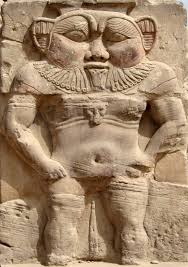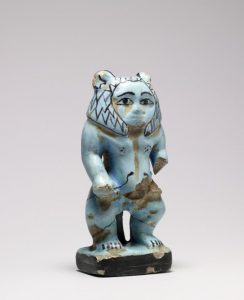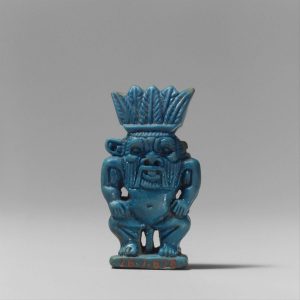What does the term ‘Bes‘ refer?
The name ‘Bes’ most probably comes from the word ‘Besa’, meaning ‘to protect’. According to R.H.Wilkinson, the term ‘bes’ is used to refer to the deities & demons of ancient Egypt who were not originally related to each other but bear almost the similar characteristics.
There are nearly ten deities who fell in this category. They are Aha, Aman, Bes, Hayet, Ihty, Mefdjet, Menew, Segeb, Sopdu & Tetetenu. These deities are not always clear in their appearance & are seen through their ‘bes’ characteristics.
Who is the god Bes?
In ancient Egypt. Bes was believed to be the tutelary guardian/ god of couples, women protection & childbirth. He was worshipped by common people as he. along with Taweret, another goddess of childbirth was strongly believed to protect pregnant women during childbirth. He was also thought to be associated with war, dancing, music, sexuality & humor.
How did the god come into prominence?
The origin of Bes is a matter of high debate. According to some scholars, he can be traced in Mesopotamia-based cults & appeared in ancient Egypt during the New Kingdom. This theory can not be accepted fully.
Because there are artifacts related to Bes, that are dated back to the period of Middle Kingdom. Although, it was the New Kingdom from when Bes came into prominence through its frequent representations & mentions. By this time, he developed as a widely venerated deity.
How Bes is depicted iconographically?
According to James Romano, the origin of the iconography of Bes can be traced in the image of a male lion rearing up on its hind paws. In was the New Kingdom from when a new characteristic came which later became one of the most important identifying characteristics of the god, that is dwarfism.
Apart from dwarfism, in the developed form of Bes, he is depicted with a short leg & an enlarged head. The head portion of the god is depicted from the front side in two-dimensional representations.
He has mask-like features along with large staring eyes& projecting tongue. Sometimes he is depicted with the mane of a lion & a lion’s tail. This is mostly the indication of his origin.

Assimilation with demon ‘Aha’
Apart from his nature of giving protection to women during childbirth, Bes was also believed to be the protector from snakes. Thus, sometimes he is depicted holding/ bitting snakes. In this form, he is often assimilated with the demon Aha who squeezed serpents in his bare hands.

Why is Bes important?
Bes was widely worshipped as a protective deity throughout ancient Egypt in the later dynastic period but they were no prominent cult center of this god. His importance as a protective deity can easily be evaluated through the available archaeological evidence.
A large number of amulets & images of Bes were recovered from several excavations & explorations by archaeologists. The god is frequently depicted through jewelry & in beds, headrests, mirrors, unguent jars etc. People also wore the masks of Bes while performing dances to protect something or somebody.

All these aspects clearly indicate that Bes was widely incorporated with the daily life of common people. This obviously denotes his great importance. He became popular to such an extent that his representations through ivory works have been found Cyprus, Syria, Nimrud in Assyria etc.